Table of Contents
Path to Sustainable Tourism in Nepal
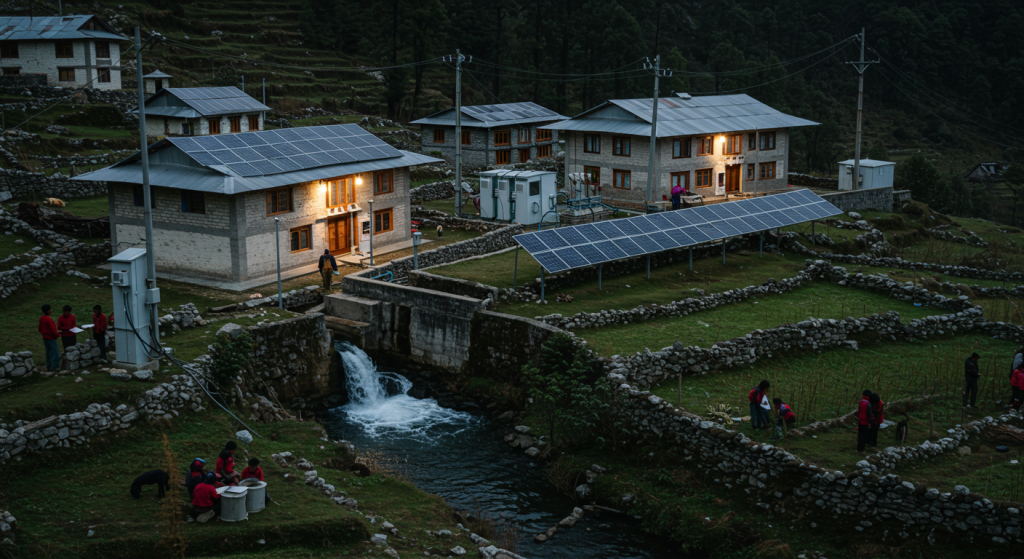
Nepal, home to the majestic Himalayas and rich cultural heritage, stands at a crossroads—balancing tourism growth with environmental preservation. As global travelers increasingly seek authentic and responsible experiences, Nepal has the opportunity to position itself as a leader in sustainable tourism practices. This article explores how the country can navigate this path forward, creating prosperity for local communities while protecting its natural and cultural treasures.
Nepal has already begun implementing several strategies to transform its tourism industry:
Government Policies and Certifications
The Nepal Tourism Board has introduced initiatives promoting sustainable practices, including the Sustainable Tourism Development Strategy 2020-2035. These frameworks encourage operators to obtain eco-certifications demonstrating their commitment to responsible practices.
Community-Based Tourism Initiatives

Communities across Nepal are taking tourism into their own hands:
- Village homestay networks allowing visitors to experience authentic rural lifestyles
- Community-managed forests and conservation areas
- Local guide associations ensuring fair employment practices
- Agricultural tourism connecting travelers with traditional farming practices
Promotion of Alternative Destinations
Dispersing visitors beyond traditional hotspots helps reduce environmental pressure while distributing economic benefits. Emerging destinations include:
- The remote Far Western Region with pristine landscapes
- The Tsum Valley, with its unique Tibetan Buddhist culture
- The Tamang Heritage Trail, offering cultural immersion close to Kathmandu
- Panauti, Nuwakot, and other historical towns with preserved architecture
Challenges of Traditional Tourism in Nepal
Nepal’s tourism industry has historically concentrated around a few iconic attractions, creating numerous challenges that threaten both the environment and authentic cultural experiences.
Overcrowding in Popular Destinations
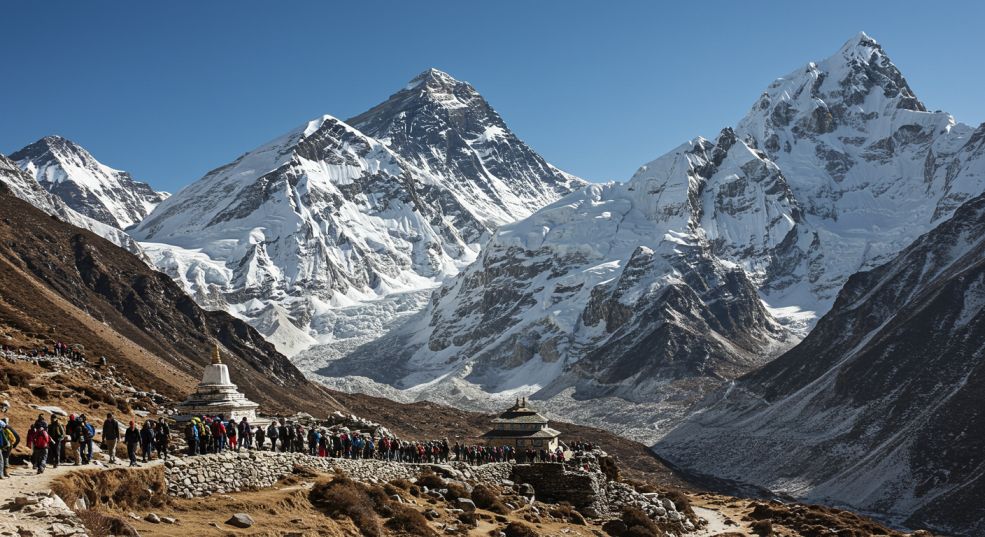
The Everest and Annapurna regions have experienced unprecedented visitor growth in recent years, leading to trail congestion, accommodation shortages, and diminished visitor experiences. During peak seasons, popular routes resemble highways rather than wilderness trails, contradicting the solitude many trekkers seek.
Environmental Degradation
The environmental impact of mass tourism in Nepal has been severe:
- Mountains of waste along trekking routes and at base camps
- Deforestation for fuel and construction materials
- Water pollution from inadequate sewage treatment
- Carbon emissions from increased air and land transportation
Cultural Commodification
Traditional customs and rituals are increasingly staged for tourist consumption rather than practiced authentically. Local artisans often abandon traditional craftsmanship in favor of mass-produced souvenirs, eroding cultural heritage.
Economic Leakage
Despite tourism’s significant contribution to Nepal’s GDP, much of the revenue leaves the country through foreign-owned businesses, international tour operators, and imported goods. Rural communities, which bear many tourism impacts, often receive minimal economic benefits.
Principles of Sustainable Tourism
Sustainable tourism in Nepal must balance three critical pillars:
Environmental Sustainability
Protecting Nepal’s diverse ecosystems requires a commitment to conservation practices, including waste management, renewable energy usage, and biodiversity protection. Leave No Trace (LNT) principles must become standard practice among both tourists and operators.
Social and Cultural Sustainability
Tourism should strengthen rather than dilute local cultures. This means respecting sacred sites, obtaining informed consent before photographing individuals, and learning about cultural practices before participation.
Economic Sustainability
For tourism to be truly sustainable, economic benefits must reach local communities through fair wages, local procurement, and community-owned businesses. Investment in education and training ensures locals can access skilled positions in the tourism sector.
Examples of Sustainable Tourism in Nepal Success Stories
Annapurna Conservation Area Project (ACAP)
As one of the world’s largest and most successful conservation areas, ACAP demonstrates how tourism can fund environmental protection. Entry fees directly support conservation efforts, alternative energy projects, and community development initiatives.
Homestays in Sirubari and Ghalegaun
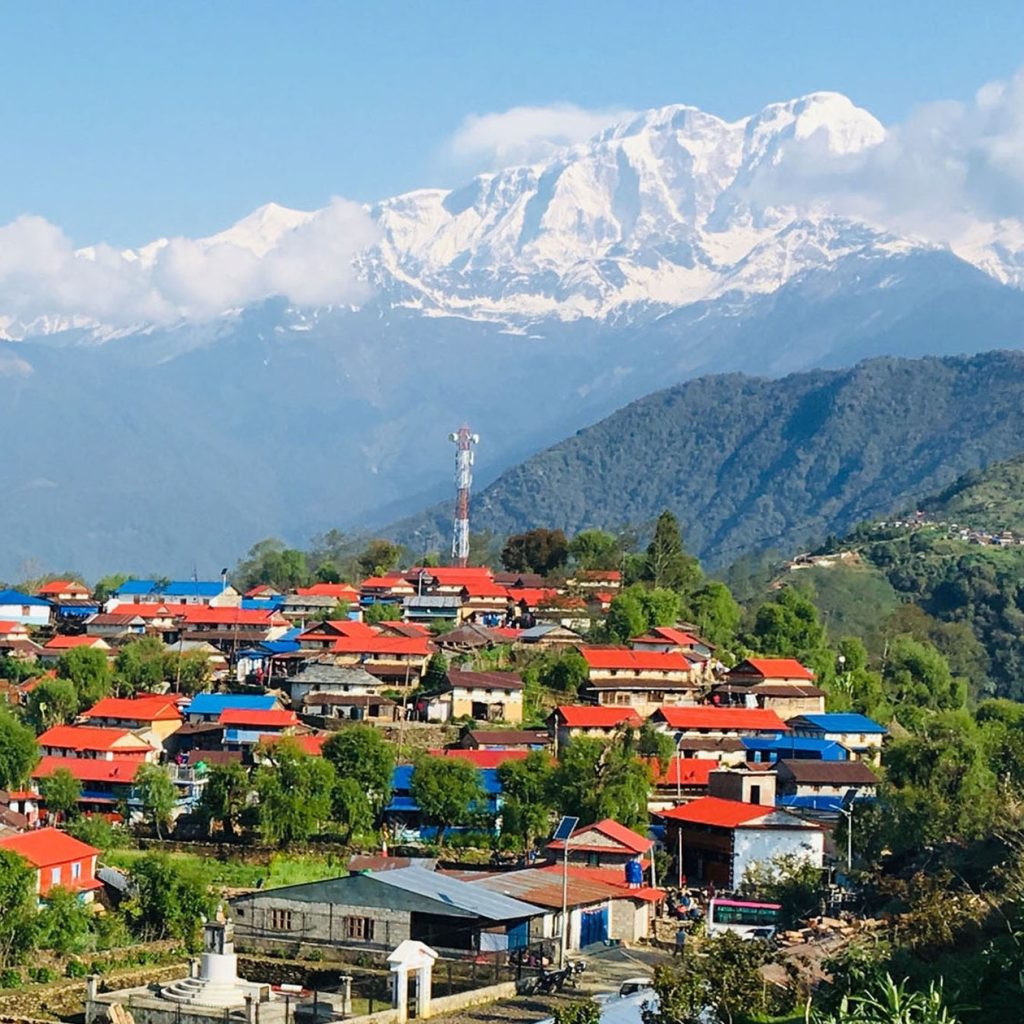
These model community tourism projects have revitalized rural economies while preserving local architecture and traditions. Visitors enjoy authentic cultural experiences while revenue stays within communities, funding schools and health clinics.
Eco-lodges in National Parks
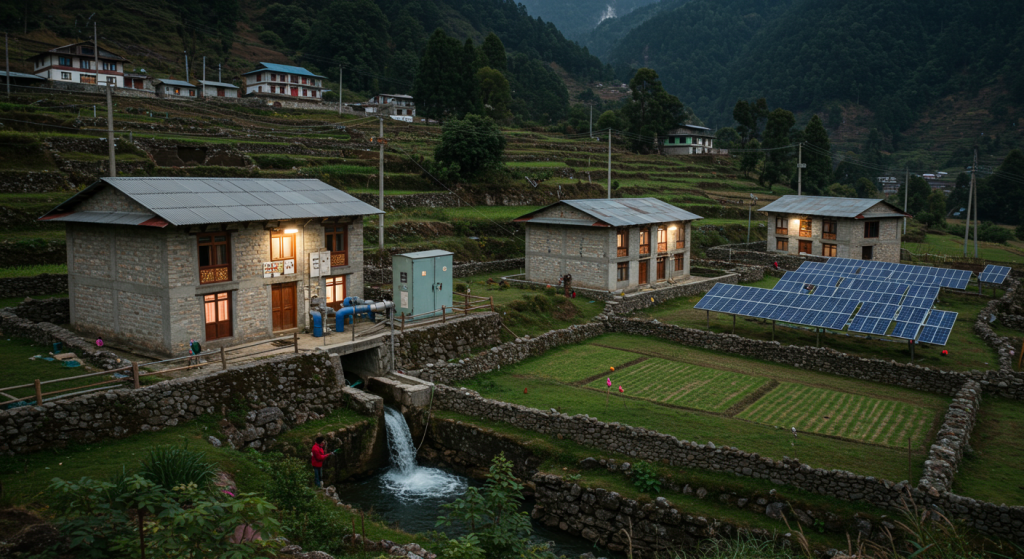
Properties in Chitwan and Bardia National Parks showcase how tourism can support wildlife conservation through responsible practices:
- Solar power and biogas energy generation
- Local hiring policies and staff conservation training
- Farm-to-table dining reducing food miles
- Wildlife monitoring and anti-poaching initiatives
Inspirational Case Studies
Yeti Airlines’ Carbon Offset Program
Nepal’s leading domestic airline demonstrates corporate environmental responsibility through its “Sustainable Flight” initiative, which plants trees to offset carbon emissions and conducts regular clean-up campaigns.
Sauraha’s Zero-Waste Tourism Model
This gateway to Chitwan National Park is pioneering waste management through composting organic waste, banning single-use plastics, and creating handicrafts from recycled materials.
Bhaktapur’s Heritage Conservation Efforts
This ancient city demonstrates how tourism revenue can fund heritage conservation, with visitor fees directly supporting the restoration of temples and traditional buildings damaged by the 2015 earthquake.
Advantages of Sustainable Tourism In Nepal
Long-term Economic Benefits Through Sustainable Tourism In Nepal
Unlike conventional tourism that often creates seasonal, low-paying jobs, Sustainable tourism in Nepal fosters year-round employment with fair wages and career growth opportunities. When local communities directly benefit from tourism revenue, they become active guardians of their natural and cultural heritage. This economic model creates a virtuous cycle where prosperity and preservation go hand-in-hand.
Preservation of Nepal’s Natural and Cultural Assets Through Sustainable Tourism
Sustainable Tourism In Nepal operates on a fundamental truth: environmental degradation and cultural erosion ultimately destroy the very attractions that draw visitors. By adopting eco-friendly practices and respecting cultural traditions, the industry safeguards Nepal’s unique selling points – from Himalayan ecosystems to ancient heritage sites. This forward-thinking approach ensures tourism remains viable for generations while maintaining what makes Nepal special.
Enhanced Traveler Experiences via Sustainable Tourism In Nepal
Today’s discerning travelers crave meaningful engagement over passive sightseeing. Sustainable Tourism In Nepal delivers transformative experiences through:
- Authentic cultural exchanges with local communities
- Hands-on participation in conservation initiatives
- Expert knowledge from specialized local guides
- Immersion in untouched natural landscapes
These deeper connections create memorable journeys while supporting Nepal’s sustainable development goals. Sustainable Tourism In Nepal proves that responsible travel can elevate visitor satisfaction while benefiting destinations – a true win-win model for the future of tourism.
Collaboration for Sustainable Tourism In Nepal
Role of NGOs
Organizations like WWF Nepal, SNV, and The Mountain Institute provide technical expertise, funding, and capacity building for sustainable tourism initiatives. Their international networks help connect local projects with global markets and best practices.
Public-Private Partnerships
Collaboration between government agencies, private businesses, and local communities creates the foundation for sustainable tourism. The government provides regulatory frameworks while businesses implement practices and communities ensure cultural authenticity.
Local Community Involvement
Sustainable tourism requires that local communities have decision-making power over tourism development in their areas. This ensures tourism respects local values and addresses community needs rather than imposing external visions.
Measuring Success in Sustainable Tourism In Nepal
Key Performance Indicators
Nepal is developing metrics beyond tourist arrivals to measure tourism’s true impact:
- Local employment rates and income levels
- Percentage of locally-sourced food and materials
- Waste reduction and renewable energy adoption
- Wildlife population statistics
- Cultural preservation metrics
Global Benchmarks
The Global Sustainable Tourism Council (GSTC) Criteria provide international standards against which Nepal’s initiatives can be measured, helping the country align with global best practices.
The Future of Sustainable Tourism in Nepal
Emerging Opportunities
Several trends position Nepal for leadership in sustainable tourism:
Eco-Trekking Innovation
Beyond traditional routes, Nepal is developing specialized eco-treks focused on wildlife observation, botanical exploration, and conservation education.
Agrotourism
Nepal’s diverse agricultural traditions offer opportunities for farm stays, culinary tourism, and traditional farming demonstrations.
Digital Nomad Hubs

With improving internet connectivity, rural communities are creating co-working spaces that allow international remote workers to contribute to local economies while enjoying Nepal’s natural beauty.
Technology for Sustainability
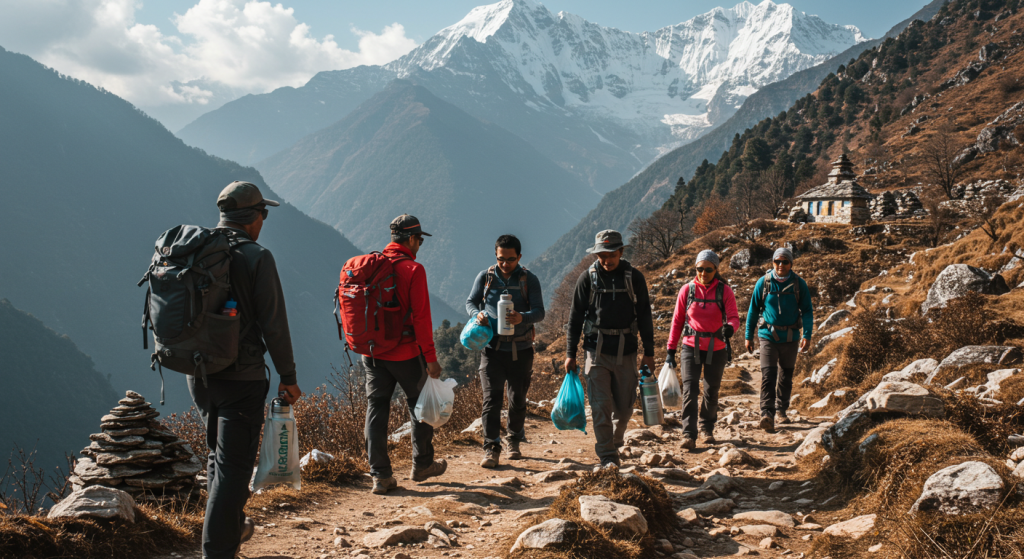
Innovative technologies are enabling more sustainable tourism practices:
- Mobile apps for waste tracking and reporting
- Virtual reality experiences for fragile cultural sites
- AI-powered energy management systems
- Digital platforms connecting travelers directly with community providers
Youth Involvement
Nepal’s young entrepreneurs are launching sustainable tourism ventures combining traditional knowledge with modern business practices. Educational institutions are developing specialized sustainable tourism curricula to prepare the next generation of industry leaders.
Conclusion
As Chief Seattle wisely stated: “Take only memories, leave only footprints.” Nepal has the extraordinary opportunity to develop a tourism industry that enhances rather than degrades its natural and cultural treasures. By embracing sustainable practices, the country can ensure tourism benefits reach rural communities while preserving the very attractions that draw visitors.
The path forward requires commitment from all stakeholders—government agencies implementing supportive policies, businesses adopting responsible practices, communities maintaining their authentic traditions, and travelers making conscious choices. Together, these efforts can transform Nepal into a global model for sustainable tourism development.
How You Can Support Sustainable Tourism in Nepal
- Choose certified eco-friendly tour operators and accommodations
- Travel during off-peak seasons to reduce crowding
- Visit lesser-known destinations beyond the typical tourist circuit
- Respect local customs and environmental guidelines
- Purchase locally-made products and services
- Share your sustainable travel experiences to inspire others
For more information on sustainable travel options in Nepal, contact the Nepal Tourism Board’s Sustainable Tourism Division at sustainability@ntb.org.np
What is the best time to visit Nepal for sustainable tourism?
The shoulder seasons (October-November and March-April) offer excellent weather while reducing the environmental and social impacts of overcrowding that occur during peak seasons.
How can I verify if a tour operator in Nepal is truly sustainable?
Look for recognized certifications like GSTC, Travelife, or Nepal’s own Sustainable Tourism Certification. Research their specific practices regarding waste management, local employment, and community benefits.
Are there sustainable alternatives to popular trekking routes?
Yes, consider the Indigenous Peoples Trail, Tamang Heritage Trail, Balthali Village Trek, or the Helambu Circuit for less crowded, culturally rich experiences that directly benefit local communities.
How can I minimize my environmental impact while trekking in Nepal?
Use refillable water bottles with purification systems, carry all non-biodegradable waste out, use biodegradable toiletries, and stay at lodges using renewable energy sources.
What percentage of my tourism spending typically reaches local communities?
In conventional tourism, as little as 10-20% may remain locally. By choosing community-based tourism initiatives, homestays, local guides, and locally-owned businesses, you can ensure 60-80% of your spending benefits local communities.

Leave a Reply